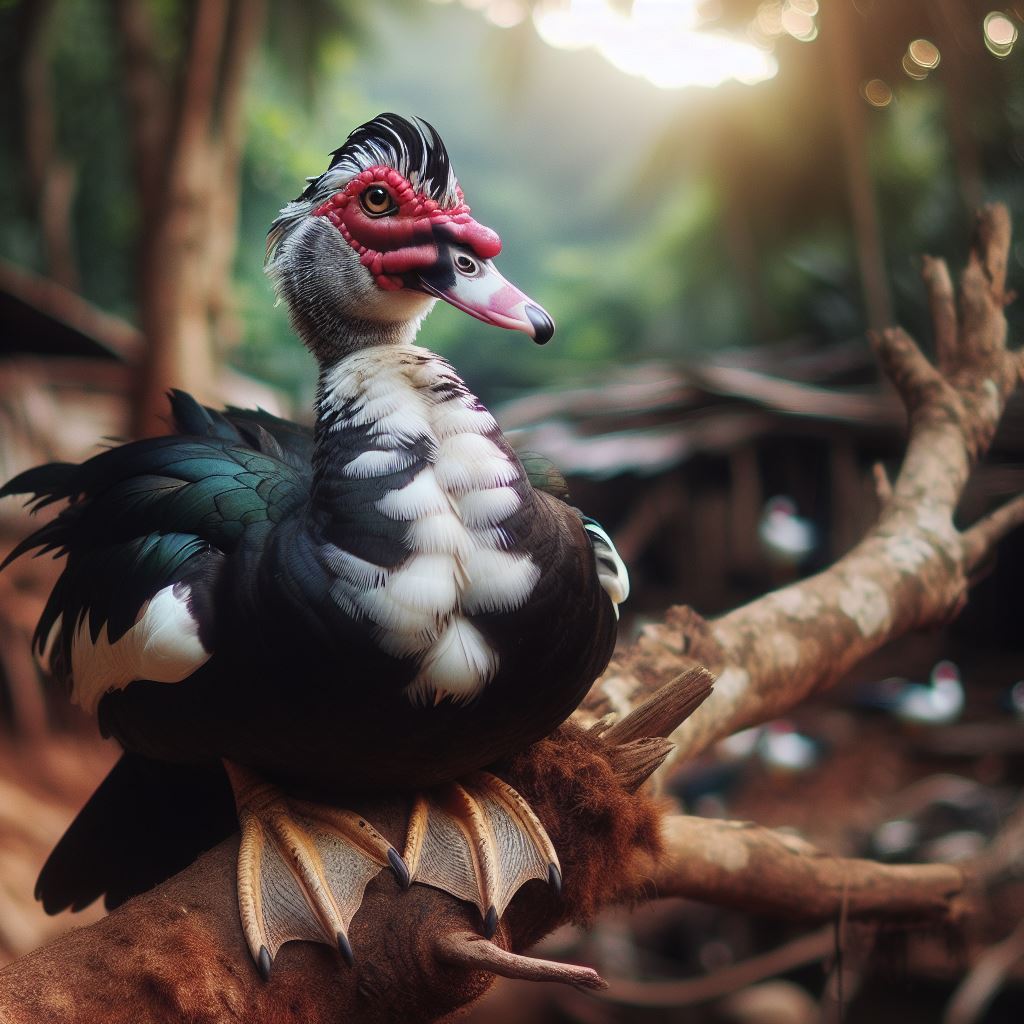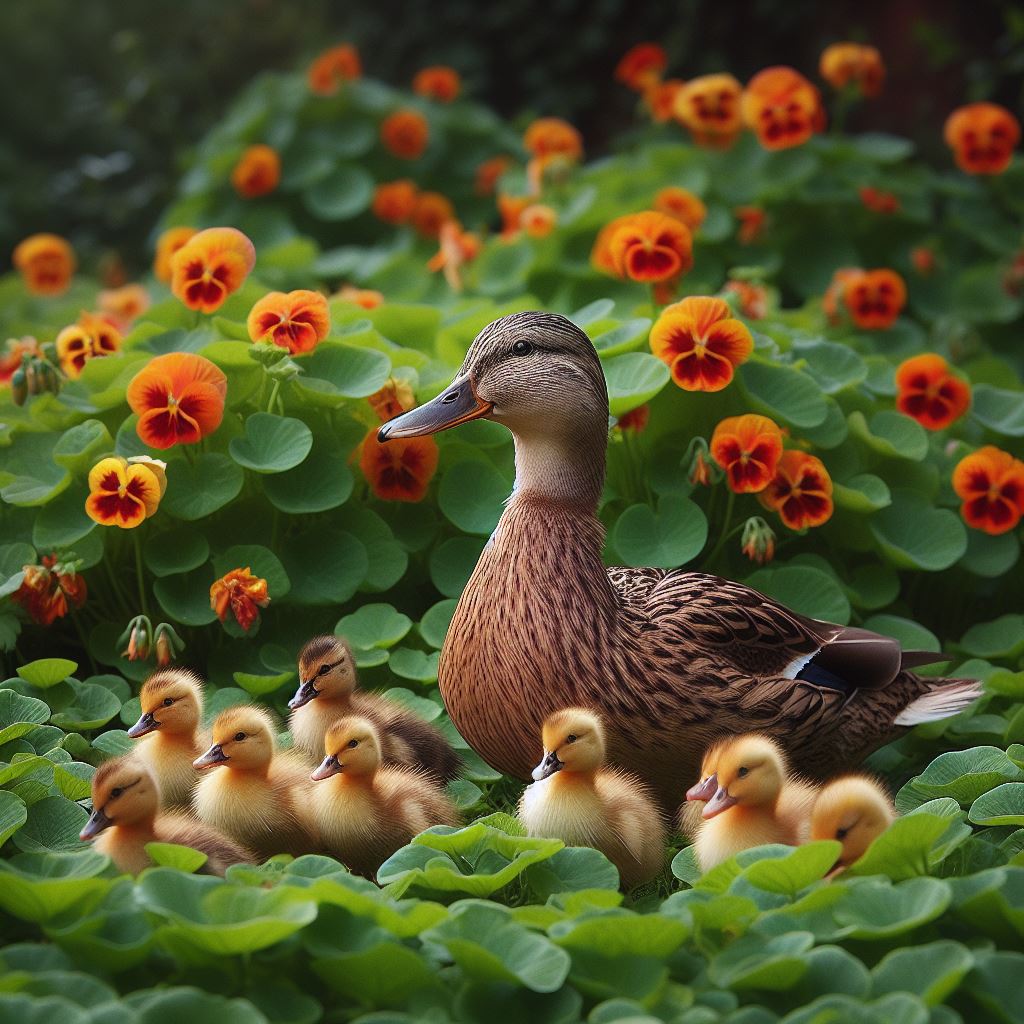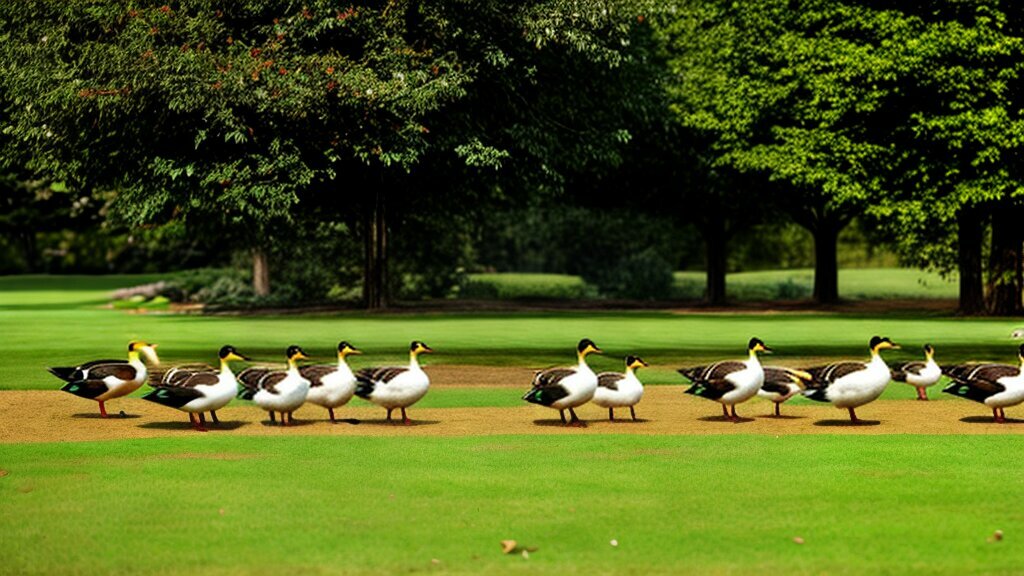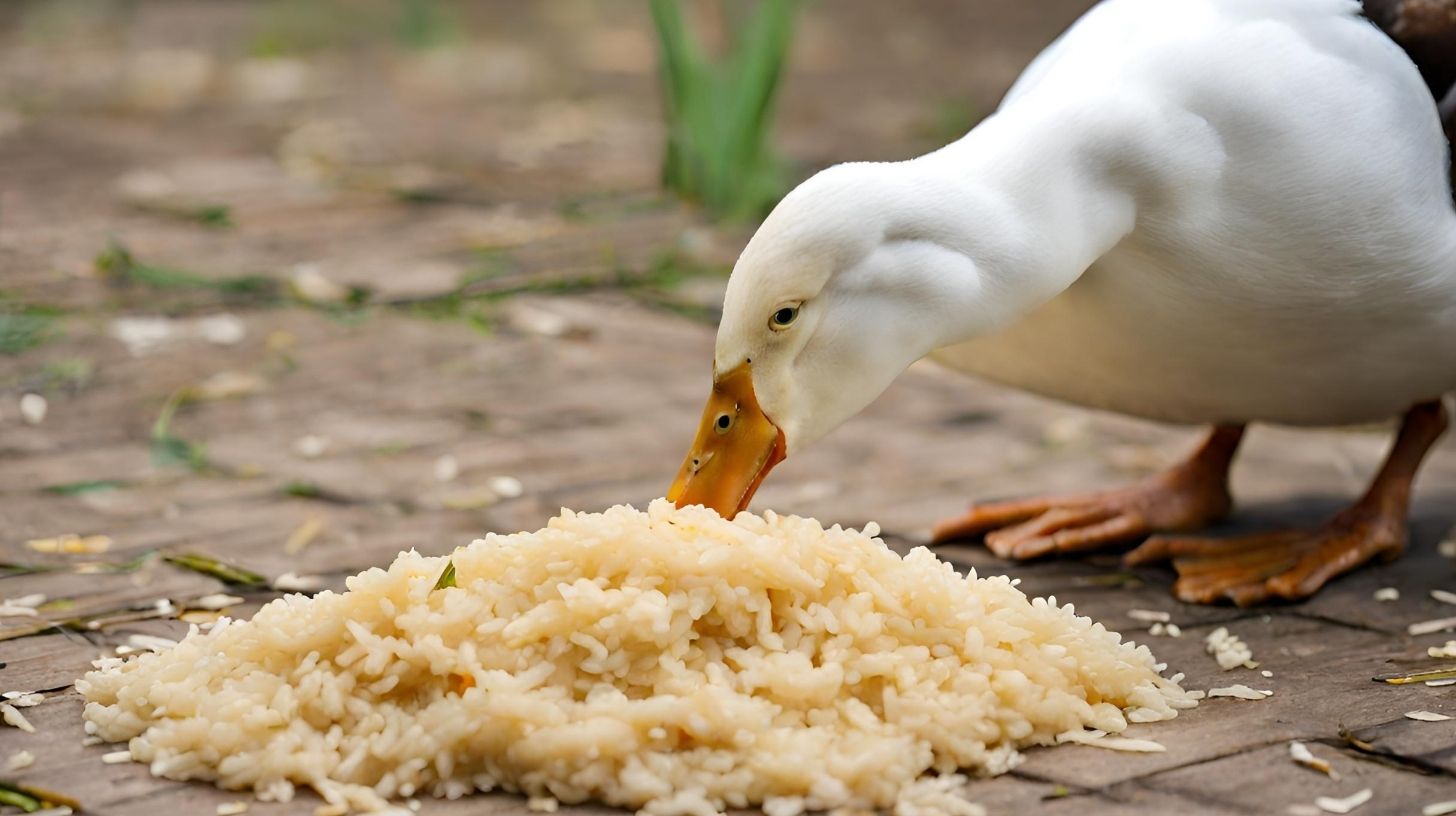Do Muscovy Ducks Fly? The Surprising Truth

Table of content:
- An Aquatic Bird With Terrestrial Adaptations
- Limited Flight Ability
- Morphology and Biomechanics of Flightlessness
- What Allows Any Muscovy Flight?
- Factors Contributing to Flightlessness
- Why Did Muscovies Become Flightless?
- What Does it Mean for Muscovies to be Flight Impaired?
- Striking a Balance – Tradeoffs of Limited Flight
- Assisting Grounded Muscovies
- Conclusion
The Muscovy duck is a unique species of waterfowl native to the tropical regions of Central and South America. Known for its bare red face, large size, and calm disposition, it has been domesticated and introduced across the world as a popular meat and pet duck breed.
But one key aspect that sets Muscovies apart from most other ducks is their limited ability to become airborne and take flight. With their large bodies, short and rounded wings, Muscovies struggle to achieve lift and are considered clumsy, awkward flyers at best.
So do Muscovy ducks fly at all? Can they soar, glide and migrate like other ducks? Or are they truly a flightless bird that scurries along the ground?
An Aquatic Bird With Terrestrial Adaptations
To understand Muscovy flightlessness, we must first examine some key morphological and behavioral adaptations that make them unique among ducks:
- Large Body Size: Muscovies are a very large duck breed, with mature males often reaching up to 15 pounds. This added body mass makes achieving flight more difficult.
- Short, Rounded Wings: A Muscovy’s wings are smaller and shorter compared to its body size than other ducks. This reduces the wing surface area available to generate necessary lift.
- Non-Migratory Nature: Muscovies do not undertake long seasonal migrations, likely due to their origins in tropical environments with fewer resource fluctuations. Without this selective pressure, flying long distances offered less of an advantage.
- Terrestrial Behavior: Muscovies spend more time walking, perching, and even nesting on the ground compared to other waterfowl, which points to more highly developed terrestrial adaptations. Their legs and feet are stronger to support movement on land.
- Minimal Flight Muscles: Analysis shows Muscovies have smaller pectoral flight muscles and less developed air sacs compared to flying duck species, which again points to the gradual minimizing of structures specifically for powered flight.
In essence, Muscovies are a primarily terrestrial duck species that has gradually adapted to life on land by losing some degree of flight capability that offered less survival advantage in their ecological niche.
 Limited Flight Ability
Limited Flight Ability
However, the occasional need to fly remains for Muscovies. So while clumsy and limited in sustained flight, they can achieve short bursts of airborne movement:
- Escape Predators: Flying up to safety to avoid danger is an important survival tactic. Muscovies can flutter a short distance to escape threats on the ground.
- Reach Food/Water Sources: Traversing to different foraging and water sites helps locate scattered resources. Muscovies are occasionally observed making these short navigational flights.
- Roost in Trees/Nest Sites: Muscovies often perch on tree branches and in nest hollows above ground which requires some flight to reach initially.
- Display in Courtship: Male Muscovies still engage in an aerial mating display to attract females, though it often appears labored. But some degree of light flight is integral to reproducing.
- Establish Dominance Hierarchy: Short flights to chase and joust with other males help establish status, rank, and access to resources conducive to increased fitness.
So while not graceful aviators, Muscovies seem to exhibit just enough power and stamina for light, limited flight important to survival and reproduction. But they lack adaptations for sustained and long-distance flight compared to related ducks.
In short, Muscovy ducks do fly, but barely and only in short bursts when necessary. Let’s analyze the mechanics behind Muscovy flightlessness in more detail.
Morphology and Biomechanics of Flightlessness
To achieve powered flight, birds rely on specialized lightweight musculoskeletal structures and aerodynamic body plans that generate the necessary lift and thrust to become airborne. The wing’s size and shape, the muscle power available, and other physiological factors all determine flight ability.
Muscovies seem to exhibit alterations in these features that demonstrate their adaptations towards increased terrestriality and flightlessness:
Reduced Wings and Flight Muscles
- Smaller Wing Area – Short, rounded wings reduce total aerodynamic surface area
- High Wing Loading – More body weight and smaller wings increase pressure on each unit wing area
- Low Aspect Ratio – Short, wide wings generate less lift and thrust
- Small Pectoral Muscles – Less power available to flap wings
- Weak Flight Muscle Attachment Points – Less force transfer across the shoulder to flap wings
Heavier Bodies
- Increased Overall Body Mass – More weight to lift off the ground
- Disproportionate Mass Distribution – More mass concentrated in the body vs the wings
Other Physiological Factors
- Underdeveloped Keel – Ridge that anchors flight muscle reduced
- Weaker Thoracic Exoskeleton – Reduced ability to withstand flight forces
- Underdeveloped Air Sacs – Less oxygen storage for aerobic flight
These pronounced changes to Muscovys’ flight morphology through natural selection paint a clear picture of their gradually increasing terrestriality and declining flight ability compared to ancestral waterfowl over time. Powered flight has not offered enough of a selective advantage for Muscovies in their ecological context to maintain structures required for sustained aerial movement.
What Allows Any Muscovy Flight?
However, the occasional short burst flight that Muscovies exhibit reveals they have not lost all aerial capability. The fact they can Flap their wings to become briefly airborne shows that some flight adaptations linger:
- Remnant Pectoral Muscle Strength – Enough to achieve labored flight
- Adequate Wing Surface Area – To generate some lift at slow speeds
- Sufficient Thoracic Rigidity – To withstand occasional flight forces
- Adequate Metabolic Capacity – To fuel short anaerobic bursts
Their short, rounded wings can still produce enough lift and thrust when flapped vigorously to lift their heavy bodies minimally off the ground for short distances before stalling and returning to the earth.
So Muscovy flight could be characterized as brief, labored bursts rather than graceful, sustained soaring due to lingering minimal flight capability balanced against increased terrestrial adaptations.
Factors Contributing to Flightlessness
Beyond natural selection pressure, what other evolutionary mechanisms or factors could be contributing to declining flight capability in Muscovies over generations?
Effects of Domestication
Most Muscovies found across the world today are domesticated livestock, raised for food and as pets. This domestication, similar to chickens, turkeys, and other ducks, could also be playing a role in reduced flight ability:
- Artificial Selection – Humans selectively breed Muscovies that grow faster and yield more meat, which often corresponds to increased body mass and terrestriality.
- Decreased Predation – Living safe from predators reduces selection pressure to fly to survive.
- Abundant Resources – Domestic birds provided food and shelter have less need to fly to forage.
So human husbandry preferences further enable the minimizing of flight-related structures which may exaggerate the natural tendency towards flightlessness in Muscovy populations.
Developmental & Epigenetic Factors
Other non-genetic and developmental influences could also impact an individual Muscovy’s flight capacity:
- Limited wing flapping during critical developmental stages may lead to reduced flight muscle growth.
- Access to abundant resources while young leads to rapid weight gain that hinders flight.
- Epigenetic regulation of certain genes due to environmental stimuli could alter wing and flight muscle morphology development.
So alongside evolutionary adaptations, rising environment and developmental conditions likely enable the flight disabilities we see in Muscovies.
Why Did Muscovies Become Flightless?
We’ve explored the morphological changes and evolutionary mechanisms that have shaped Muscovies into constrained, clumsy fliers. But why did they diverge down an ecological path so unusual for waterfowl?
Several key ecological and behavioral factors likely contributed:
Abundant Food Resources: Muscovies occupied tropical wetland habitats with stable, abundant food supplies. Less need to migrate or disperse long distances decreased necessity for sustained flight capability.
Predation Pressures: With formidable size and sharp claws, Muscovies are well-equipped to fend off predators, reducing necessity to take flight. Instead, they often confront threats aggressively or hide in dense vegetation.
Nesting/Roosting Behaviors: Nesting on the ground or in tree hollows is safer in warmer climates. Walking or short flights to nest sites maintained survival and reproduction, minimizing pressure for powerful flight.
Sexual Selection: Male Muscovies impress females with their size and flashy plumage during elaborate ground mating displays. Large bodies and terrestrial displays were sexually selected over aerial agility.
In essence, the environmental context Muscovies evolved in enabled their ancestral population to gradually adapt a more terrestrial lifestyle and reduce dependency on sustained flight over generations without sacrificing survival or mating opportunities. Becoming flightless was not a hindrance, but rather a beneficial adaptation.
What Does it Mean for Muscovies to be Flight Impaired?
While other ducks migrate vast distances or escape by gracefully soaring into the air, the typical Muscovy duck struggles to even hoist itself over a fence.
This apparent “disability” stems from evolutionary adaptations – being a grounded, terrestrial bird suits Muscovies well enough to thrive. But life without sustained flight does lead to some key ecological consequences:
Dispersal Limitations – Cannot traverse large geographical barriers or spread to new habitats as easily.
Escape Inefficiencies – More vulnerable and easily caught if unable to take quick flight from danger.
Roosting/Nesting Constraints – Require slopes, ramps, or steps instead of flying directly to an elevated site.
Lower Metabolic Efficiency – Walking and swimming everywhere is more physically exhausting than flying.
Still, while being flight-challenged may seem like a deficit requiring human intervention, Muscovy populations persist and grow. Their minimal aerial skills satisfy survival and breeding necessities in tandem with their more highly adapted terrestrial existence.
Striking a Balance – Tradeoffs of Limited Flight
While being grounded puts constraints on dispersal and predator evasion, minimized flight offers some advantages that benefit Muscovies as well:
Energy Savings – Less energy wasted on growing large flight muscles and wings means more energy channeled towards body growth and egg production.
Reproduction Boost – Earlier breeding and higher egg production results from becoming heavier terrestrial birds.
Foraging Focus – More time can be spent scavenging rich food sources on land rather than flying to seek patchy aquatic vegetation.
Brood Care – Flightless hens may invest more time and energy caring for offspring.
So while we conceive of flight capabilities as an innate advantage, the Muscovy’s strategic trade-off of minimizing flight to specialize as a primarily terrestrial duck seems to enhance other facets of its survival and reproduction. Their evolutionary path has struck an optimal balance given their environmental context.
Assisting Grounded Muscovies
While life without sustained flight poses no grave threat to wild or domestic Muscovies that retain minimal aerial capabilities, their grounded nature does require some special provisions for their care and containment.
Housing: Supply ramps to access housing and nest boxes; Ensure outdoor pens have dense spots for cover.
Transportation: Use crates, carriers with bedding rather than leaving them loose where they could fall or escape.
Protection: Give escape routes from aggressive flock mates; dogs/predators since they cannot fly to safety.
Nutrition: Provide formulated feed; Calcium for egg production; High protein content for chick growth.
Health Care: Monitor for bumblefoot sores and parasites since terrestrial; Ensure good leg and claw health.
Enrichment: Platforms, perches and shelters to access vertically; bushes and trees to mimic native habitat.
Breeding: Assist hen’s access nest boxes; Retain vigorous males that can achieve breeding flights.
With some provisions to assist with their grounded lifestyle, Muscovies can thrive under human care like any other domestic poultry. Avoiding selection for excessive body mass and retaining their short but functional wings preserves just enough innate flight ability should the odd emergency escape flutter become necessary.
Conclusion
The Muscovy duck occupies an unusual niche in the waterfowl world as a predominantly grounded, terrestrial bird. While adapted from ancestral ducks that likely flew effectively, gradual specialization towards life on land led to reduced flight capability in Muscovy populations over time. Yet enough aerial prowess lingers for short labored flight bursts when pressed into service for survival or reproduction needs.
This balance strikes an optimal blend of minimizing costly flight structures while retaining the touch of aerial agility necessary in emergencies – all tuned finely towards thriving in their ecological context as a largely terrestrial species.
So while the Muscovy duck will never migrate vast distances or take gracefully to the skies, its awkward aerial abilities align well with its niche to enable thriving as a predominantly grounded bird. Their limited flight capacity is not a disability, but rather an unusual strength evolved in harmony with their niche as lumbering, road-running waterfowl wandering the interface of land and water.
Welcome. I’m Adreena Shanum, the proud owner of this website, and I am incredibly passionate about animals, especially poultry. I founded adreenapets.com as a labor of love, stemming from my desire to share my knowledge and experiences with poultry enthusiasts worldwide.




